When Is an Express Lane Too Slow To Be an Express Lane?
Those HOV and express lanes on the 110 used to provide an escape route for those trying to avoid the slow-moving morning rush hour traffic.
But lately, there are times it’s not moving much faster than the rest of the clogged freeway, one of LA’s worst.
We compared speeds between the regular traffic on the 110 against speeds in the HOV and express lanes over the past seven years on the section between Gardena and Downtown LA. In the southern part of the route, near Gardena, the lane is an express lane, where drivers can pay a fee to use it. Closer to Downtown, it becomes a high occupancy vehicle (HOV) lane, where vehicles with at least two passengers can use it. Electric vehicles can use both lanes.
We looked at one of the busiest commutes on this freeway: the morning rush hour heading north into the city.
In 2012, the express/HOV lane moved at 50.5 mph during the crucial northbound morning commute (between 7-9 am). That was 126% faster than the regular traffic, which travelled at just 26.5 mph.
Since then, the difference between the express/HOV lane and the regular traffic has narrowed. During the first 10 months of 2017, express/HOV lane speeds were 35.6 mph, while regular lanes travelled at 25.3 mph.

That’s dangerously slow. Express lanes that are funded by federal transportation dollars must operate above 45 mph during rush hour.
One important distinction: the Los Angeles County Metropolitan Transportation Authority defines the morning rush hour as between 5-9 am. With those extra two early-morning hours, the average speed does rise about 45 mph.
To address the problem, Metro decided that electric vehicles will no longer be able to use the express lane. They hope that kicking out EVs will speed things up.
It’s a decision that pits California’s environmental policy against the federal government’s transportation policy.
But was that the right move?
How We Did It
Using our TransDec system, we were able to calculate average speeds up and down the 110 for every hour of the day since 2012. We then calculated averages for weekdays for morning and even rush hours only (7-9 am and 4-7 pm) for each year. For the stretch of the 110 just south of Downtown LA and Gardena, there are 10 spots along the route where we can calculate speeds on both the regular lanes and the express lanes.
So we made a comparison between the two. Still have questions? Write to us at askus@xtown.la






